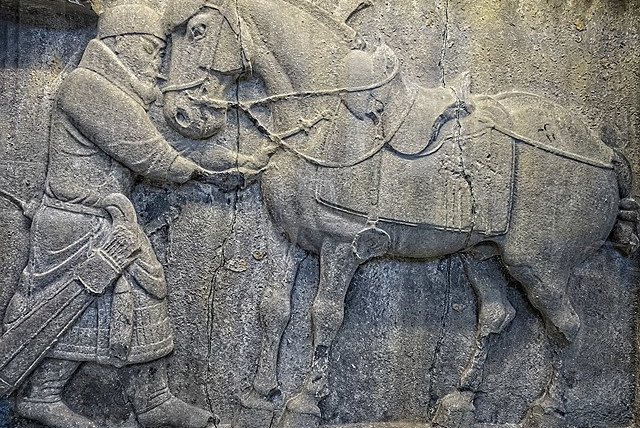Genome study shows how horses galloped into human history

The genomic evidence showed that horses were first domesticated in Central Asia - northern Kazakhstan to be precise - about 5,500 years ago by people from what is called the Botai culture.
The advent of horse-based transportation represented one of the seminal moments for humankind, connecting ancient peoples by enabling them to move quickly over long distances for the first time while also transforming how wars were waged.
But the timing of equine domestication and the subsequent broad use of horse power has been a matter of contention. An analysis of genome data from 475 ancient horses and 77 modern ones is providing clarity. It revealed that domestication actually occurred twice - the first time being a dead end - and traced the rise of horse-based mobility to around 2200 BC in Eurasia, centuries later than previously thought.
When did horses become domesticated?
"Animal domestication, in general, changed human history, but no other animal was a king-maker as the horse was," said evolutionary biologist Pablo Librado of the Institute of Evolutionary Biology (IBE) in Barcelona and previously of France's CNRS research agency, lead author of the study published this week in the journal Nature.
"Think of Genghis Khan, with an empire stretching from the Sea of Japan to the doors of Europe. The world as we know it today has been shaped by horses. Think in agriculture, how important horses were as working animals. Think in New York or Washington 200 years ago, with carriages pulled by horses in the streets," Librado said.
The genomic evidence showed that horses were first domesticated in Central Asia - northern Kazakhstan to be precise - about 5,500 years ago by people from what is called the Botai culture. But this domestication was based on obtaining meat and milk, not movement, and did not spread. The feral Przewalski's horses of Mongolia descended from those Botai horses.
The domestication of a second equine bloodline began roughly 4,700 years ago in the western Russian steppes, trotting along for a period of centuries before horse-based mobility suddenly galloped across Eurasia about 4,200 years ago, the study showed. All modern domestic horses have their origins in this event.
The genomic evidence revealed a shift in breeding practices at that time to satisfy the demand for horses. People doubled horse production capacity by halving the time between generations from eight years to four, according to molecular archaeologist and study co-author Ludovic Orlando of the Center for Anthropobiology and Genomics of Toulouse in France.
"We detect close-kin mating only from that time, and not in the deeper past. This is a practice that wild or domestic horses tend to avoid unless breeders force them to mate with their relatives, to maintain and select for certain valued traits such as increased docility," Librado said.
"Once horses were spread across Eurasia, and the pressure to further expand them in space and numbers diminished, the horse generation time returned to normal values. The generation times were only reduced again in the last 200 years following industrial breeding - the emergence of new horse breed types tailored to specific tasks," Librado added.
Horse-based mobility allowed people to move quickly over large distances, speeding up communication and trade networks across Europe and Asia and enabling exchanges and interactions among diverse cultures. Chariots and cavalry reshaped warfare.
"This started a new era in human history, when the world became smaller, more global. This era lasted until the invention of combustion engines in the late 19th century," Orlando said.
"How many empires rose and fell because of a powerful cavalry?" Librado asked. "We believe that a key element in the early dispersion of horses was the invention of spoke-wheeled chariots, which in contrast to heavier wagons could be pulled by horses and not by cattle for the first time in human history."
There were massive human migrations in Eurasia at around 3,000 BC that spread Indo-European languages. Horse-based mobility previously was believed to have played a central role.
"It was thought that human steppe migrations about 5,000 years ago took place on horseback. Our work shows that at that time the horse did not move across the steppe. Hence, while people moved, horses did not," Orlando said.
Jerusalem Post Store
`; document.getElementById("linkPremium").innerHTML = cont; var divWithLink = document.getElementById("premium-link"); if (divWithLink !== null && divWithLink !== 'undefined') { divWithLink.style.border = "solid 1px #cb0f3e"; divWithLink.style.textAlign = "center"; divWithLink.style.marginBottom = "15px"; divWithLink.style.marginTop = "15px"; divWithLink.style.width = "100%"; divWithLink.style.backgroundColor = "#122952"; divWithLink.style.color = "#ffffff"; divWithLink.style.lineHeight = "1.5"; } } (function (v, i) { });

